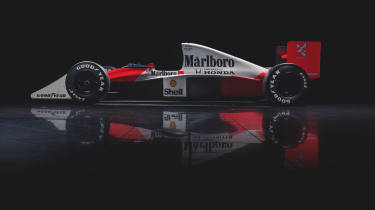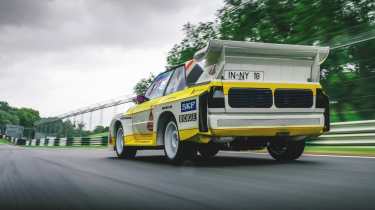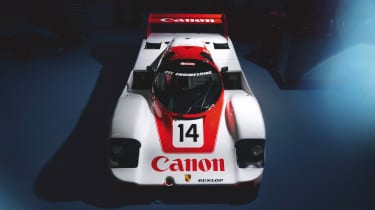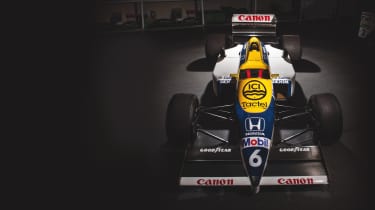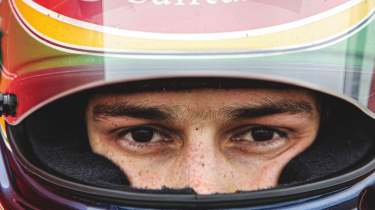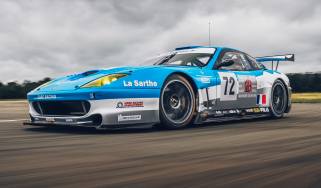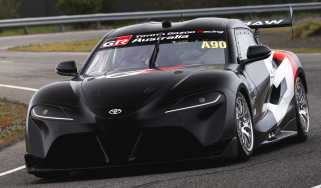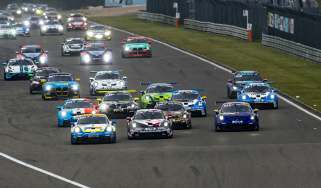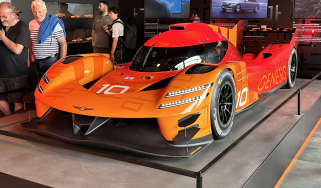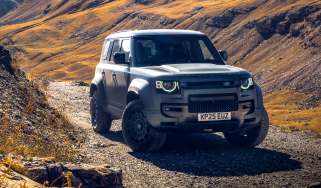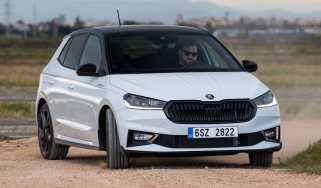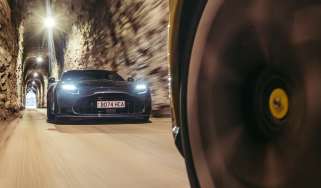Why the 1980s were both motorsport's peak and its breaking point
If road cars were great in the ’80s, the motorsport was simply spectacular, from Group B rally monsters via Group C endurance legends to turbocharged F1 cars. But there was tragedy, too
Group A. Group B. Group C… Was a decade ever blessed with a more evocative regulatory roll-call? Whether you fell in love with showroom-based homologation heroes, fire-spitting all-wheel-drive monsters or high-downforce prototypes, the ’80s were a riot of spectacular cars and vibrant racing.
Colourful liveries – often advertising tobacco or alcohol products – made the grids even more spectacular, as did the generous marketing budgets that paid for them. Such was the impact of those sponsors that many fans fortunate enough to enjoy watching them in period still refer to the Rothmans Porsches and Silk Cut Jags at Le Mans, or the Marlboro McLarens and Gitanes Ligiers in F1. Likewise, the Martini-liveried Lancia 037s and S4s that ruled Group B, immediately followed by the Delta Integrales that came to dominate Group A once the so-called ‘Killer Bs’ were banned.
> How NASCAR is dull, confusing and utterly captivating all at once
Group A tends to get overshadowed, but it gave us a fabulous array of touring cars, with Ford’s wild RS500 Cosworth and BMW’s exquisite E30 M3 epitomising the days when the quest to create competitive racing cars spawned great road cars.
Of course, it’s a sad reality of ’80s motorsport that kaleidoscopic racing liveries went hand-in-hand with some decidedly dark days. Those beautiful Martini-striped Lancias were involved in two fatal crashes on consecutive Tour de Corse WRC rallies, Attilio Bettega losing his life after losing control of his 037 and hitting a tree in the 1985 event, with Henri Toivonen and co-driver Sergio Cresto killed in a fiery crash in their Delta S4 the following year.
Group B died with them when FIA president Jean-Marie Balestre took steps to ban the category – and its planned successor, Group S – from the end of the ’86 season. It was the right call. However, Group B would enjoy an unusual swansong, Audi and Peugeot continuing their Group B battle at Pikes Peak until the end of the decade. Audi’s Michèle Mouton and Walter Röhrl and Peugeot’s Ari Vatanen (not to mention local heroes Bobby and Robby Unser, who drove for both manufacturers) all secured wins on the mountain, with Vatanen’s record-breaking efforts in his 405 T16 immortalised in the spectacular short film, Climb Dance.
Rallying had the high-profile reputation for risk, but F1 and the World Sportscar Championship both endured a difficult decade. The deaths of Patrick Depailler, Gilles Villeneuve, Riccardo Paletti and Elio de Angelis rocked F1, while Manfred Winkelhock, Stefan Bellof and Jo Gartner were among endurance racing’s casualties. Racing will always be a dangerous business, but back in the ’80s speed still took precedence over safety.
Bellof’s loss was felt particularly deeply, for he was one of the decade’s most incendiary talents. Immortalised for his blistering 6:11.130 qualifying lap in a Rothmans Porsche 956 at the Nürburgring (followed by a spectacular crash in the race the following day…), his boyish looks and beaming smile belied a fearlessness that spooked rivals and teammates but captivated fans. Having secured an F1 seat with Tyrrell for the ’84 season, Bellof’s talent dazzled in the same sodden Monaco Grand Prix that saw a certain Ayrton Senna make his F1 debut. He was undoubtedly destined for great things. His death in September the following year after a violent crash in the Spa-Francorchamps 1000KM round of the World Sportscar Championship remains one of motor racing’s most painful losses.
Despite the heartache, endurance racing – especially at Le Mans – enjoyed a golden period during the 1980s, largely thanks to Porsche’s 956 and 962, which dominated the Group C era in the hands of factory and privateer drivers alike. Derek Bell and Jacky Ickx won for the factory in 1981 in the 956’s ageing predecessor, the 936, then followed it with a win on the Group C Rothmans 956’s Le Mans debut in ’82. It was a feat they repeated in ’83 in another 956. Privateer Team Joest’s famous double in 1984 and 1985 (with the same 956 chassis) continued Stuttgart’s winning streak, which was extended by a further two years when Derek Bell, Hans Stuck and Al Holbert won back-to-back LM24s in ’86 and ’87 in factory Rothmans 962Cs.
All of which made Jaguar’s win in 1988 all the sweeter, Jan Lammers, Andy Wallace and Johnny Dumfries breaking Porsche’s seven-year stranglehold with a thrilling victory in the Silk Cut-liveried XJR‑9. The win came some 31 years after the Coventry marque last won Le Mans with its gorgeous D‑type.
Not to be outdone, F1 also provided an abundance of unforgettable moments throughout the decade. Turbocharged cars might have arrived in the late 1970s, but they reached their fire-breathing, wheel-spinning, 1500bhp zenith in the 1980s.
Renault were the innovators, but it was Brabham – then owned by Bernie Ecclestone and with Gordon Murray as chief designer – that were first to propel a driver to the F1 title with a turbocharged car. Brazilian Nelson Piquet – a favourite of both Ecclestone and Murray – secured two drivers’ titles with Brabham. His first, in 1981, was in a DFV-powered car, but his second in 1983 came with BMW’s fearsome turbo engine.
The ’80s would also see Brabham credited with inventing the tactical pit stop, Gordon Murray deducing that starting the ballistic but thirsty BMW turbo-powered BT50s on a lower fuel load would allow them to maximise their speed advantage over teams who all started their cars brimmed with enough fuel to get them to the end of the race. Obvious now, but a stroke of genius back in 1982, that first mid-race refuelling pit stop revolutionised team strategies overnight.
The turbo era would see some fierce battles, those between Williams-Honda teammates Nigel Mansell and Nelson Piquet, not to mention Piquet’s grudge match with compatriot Ayrton Senna (then driving for Lotus) leading to some hair-raising racing. Other unforgettable snapshots from the era include Keke Rosberg’s record-breaking 160mph qualifying lap at Silverstone in 1985, when even a rapidly deflating tyre failed to wrong-foot the tab-smoking Finn. That same year Senna would score his first F1 win, in streaming wet conditions. The image of the jubilant genius entering parc fermé in his black-and-gold Lotus with clenched fist raised aloft is spine-tingling. And in 1986 Mansell’s tyre blowout in the Australian GP when tantalisingly close to winning his first World Championship remains one of the most gut-wrenching of all F1 moments.
Senna would feature in another of the decade’s (arguably F1’s) most extraordinary seasons when he won the 1988 drivers’ title against intense opposition from teammate Prost. Between them the pair would take 15 wins from 16 races in their Honda turbo-engined MP4/4s. Prost scored more points across all the races, but after applying F1’s rules of only counting a driver’s 11 highest scores, Senna’s eight victories and three 2nd places pipped Prost’s seven wins and seven 2nds by three points.
As for the lone non-McLaren win? That was scored by Ferrari’s Gerhard Berger, leading his teammate Michele Alboreto home to a remarkable 1-2 finish in the Italian Grand Prix at Monza, less than a month after Enzo Ferrari’s death. Even Netflix couldn’t have made that one up. The following season saw Senna and Prost resume their battle, this time in wailing, naturally aspirated Honda V12-powered McLarens. Their clash in the season finale Japanese Grand Prix – from which Prost would retire and Senna would continue, only to be disqualified at the end of the race thereby conceding the title to Prost – would set the tone for F1’s most bitter rivalry.
The 1980s also gave fans of ultimate speed cause to celebrate, when Scottish entrepreneur Richard Noble drove the John Ackroyd-designed ‘Thrust2’ Land Speed Record car to a two-way average of 633.468mph on October 4, 1983. Emblazoned with sponsorship from that most ’80s of men’s fragrances – Turbo by Fabergé – the 30,000hp 3900kg machine streaked across the Black Rock Desert in Nevada to take the record from the American Gary Gabelich’s rocket-powered Blue Flame. Making good on his promise to ‘bring back this record for Britain’, Noble and Thrust2 epitomise a colourful decade defined by raw power and a gloriously gung-ho attitude.
This story was first featured in evo issue 334.
